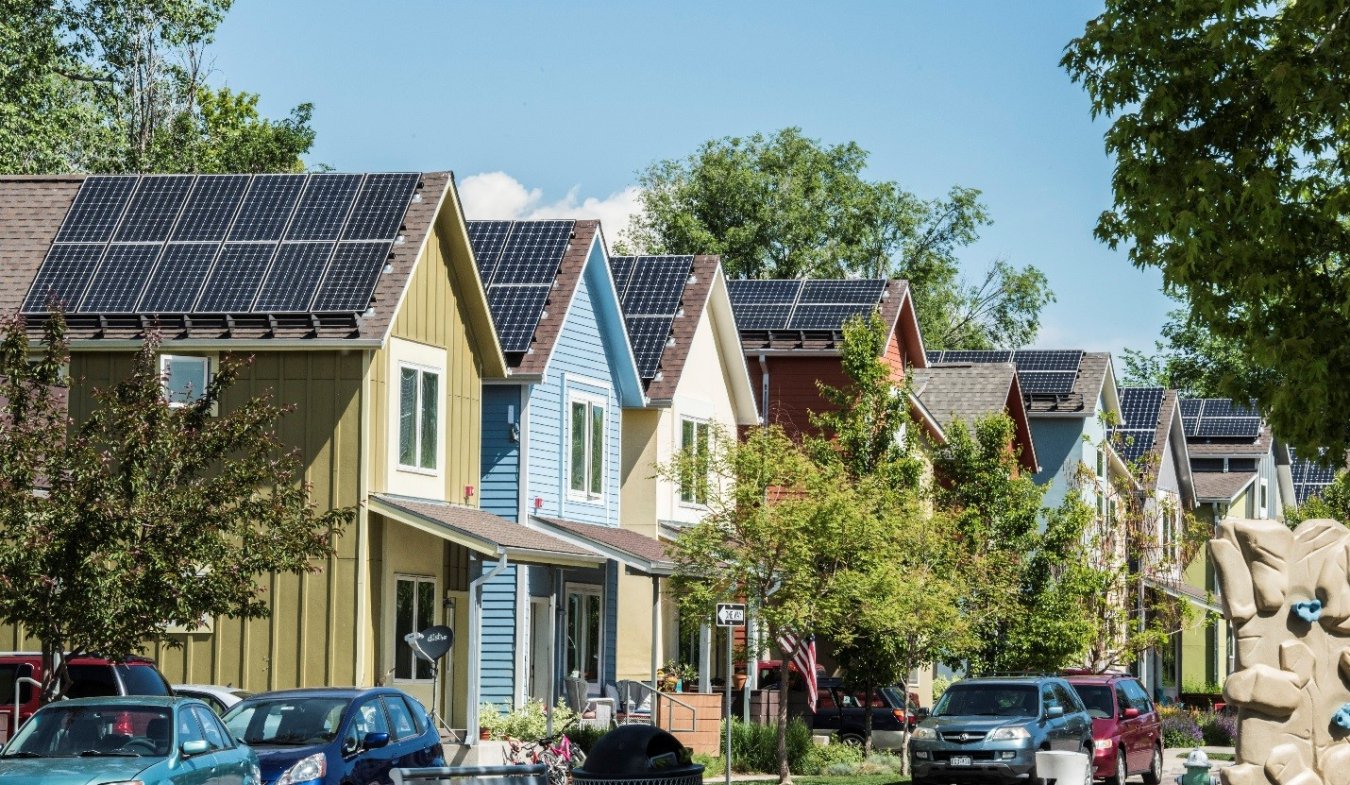Renewable Energy Microgrids: Smart Power, Smarter Cities
Why this over wind?
I chose solar microgrids over wind turbines for their scalability in dense urban environments and their ability to work on building rooftops — unlike wind turbines which need wide open space and constant wind.
Trade-Offs & Realism
Financial Cost vs. Long-Term Benefit
Installing rooftop solar panels and battery storage systems can cost between $10,000–$20,000 per home. Households save thousands per year on electricity and gain energy security during blackouts. At scale, government subsidies and local manufacturing reduce unit cost, which makes it affordable in the long term.
Space and Infrastructure
Solar panels fit on rooftops and don’t take up land, making them ideal for dense urban areas. Battery storage requires dedicated space, but I’ve integrated it within basements or centralized blocks. Microgrid control systems also need trained technicians.
Rooftop photovoltaics in Boulder, CO. Photo by Dennis Schroeder.
Scalability
Easily scalable by district. Each block or neighborhood can have its own microgrid. In emergencies, these can function independently ("islanding"), improving city-wide resilience.
Social Acceptance
Some residents may resist the visual appearance of panels or be concerned about maintenance. Community education and incentives (F reduced energy bills, app-controlled monitoring) can increase adoption.

